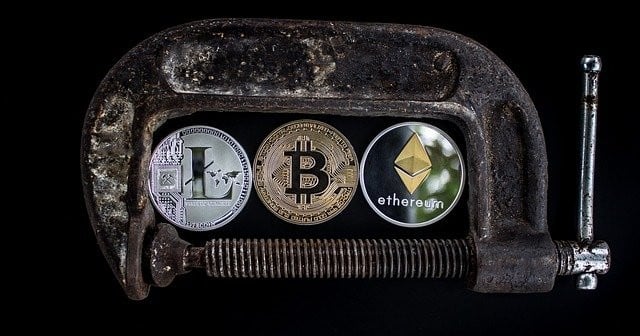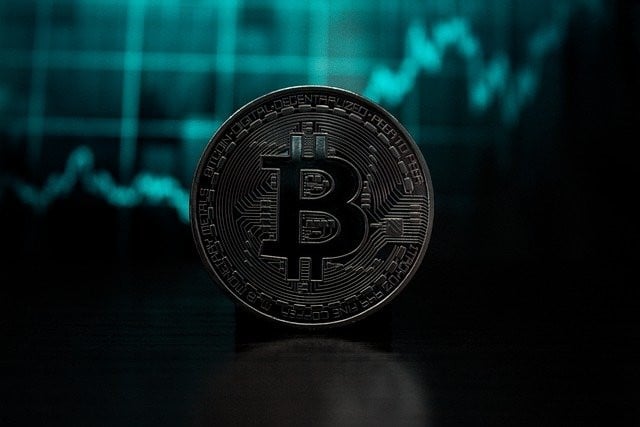While cryptocurrencies have existed for a comparatively short time – the blink of an eye by historical standards – they too are not immune to the effects of inflation. As such, in any conversation surrounding crypto or blockchain, you may have stumbled across the term, “coin burning” and wondered what that could mean in the context of cryptocurrency. Coin burning? That couldn’t possibly refer to the destruction of a digital asset credit, could it?
You can’t just delete a cryptocurrency, right?
Related: What is Proof of Stake? | What is Proof of Work?
What is Coin Burning in Cryptocurrency?

Coin burning, as the name suggests, involves the effective eradication of a certain amount of cryptocurrency in order to reduce the total supply available. This Process can be used for several reasons, ranging from inflation management all the way to serving as the centerpoint of a Paul consensus algorithm designed to secure a blockchain, It doesn’t actually involve eradication of the coins as much as removing them from circulation.
Down below, we will cover the manner in which cryptocurrency is “burned” and how it differs from the outright destruction of coins (and how it doesn’t), and why this method has proven itself to be increasingly useful as the cryptocurrency market evolves and grows.
Related: How To Invest in NFT Art
How Coin Burning Works

Coin burning is a simple process in which currency is removed from circulation, forever by sending units of crypto to a public address whose private key is certifiably unattainable. This last part is important because due to the immutable nature of the blockchain, the currency itself cannot be destroyed in the sense that fiat currency can, quite literally, be burned. Instead, this address, known as an Eater Address, is generated without private keys, meaning that any currency sent to them is lost forever. This is because there is no way to reverse the transaction and, without the private key to retrieve and operationalize the funds in the public address, they are as good as gone from circulation forever.
Think of it like putting indestructible precious metal inside of an indestructible, unpickable safe. Though the value of the stored metal is lost, the resultant increase in scarcity raises the value of the rest of the metal in circulation. Its indestructibility is irrelevant because it cannot be used again, rendering it as non-existent as if you had, well, set a pile of cash ablaze.
Related: What are NFT Stocks?
Why is Coin Burning Used?

Removing a set amount of currency from circulation has a few key uses that have made it an increasingly commonplace tool for numerous lock chains as cryptocurrency matures by the day. The chief effect of coin burning is, quite obviously, a reduction in the total circulating supply of the currency. This can be used like a stock buyback to increase the value of the remaining tokens.
How?
It’s a simple as Adam Smith’s invisible hand; if the supply of currency shrinks in relation to the demand, the remaining currency will see a proportionate increase in value. This is not only useful for improving the value of each individual unit outright, but also as a ward against the constant scourge of inflation.
The process of coin burning can also be used as a component of a blockchain consensus algorithm, fittingly called the Proof-of-Burn (PoB) protocol, which is seen as one of several alternatives to the energy-intensive Proof of Work consensus algorithm that Bitcoin uses. A blockchain’s consensus algorithm is the security protocol that nodes on the network use to validate transactions and add them to the immutable public ledger that is the blockchain. Proof of Burn essentially rewards nodes who can prove they’ve burnt a certain amount of currency with the ability to write new blocks or, in some cases, with a different currency from another blockchain. The exact rewards depend on the specific use-case, but all act as validation-check.
Related: What Is Ethereum?
Coin Burning Examples

Binance’s BNB coin is one of the more salient examples of coin burning, The company committed to burning 100 million BNB (roughly equivalent to half of the total supply for the currency) over the next couple of decades. This, in a way, incentivizes holders of BNB to get in sooner rather than later, as the value will be set to rise due to specific measures taken by the company.
The company conducts a burned every quarter, just recently wrapping up its largest ever on January 21 we are over $165 million worth of DMB was burned by the company. The next quarterly burn is set to take place sometime in the coming weeks.
In late 2019, the non-profit organization, Stellar, burned roughly 50% of its native currency, XLM’s, total supply — a total value of over 4 billion dollars. According to a statement by Stellar, this had nothing to do with inflation management or price manipulation, but rather to promote “leaner operations” as part of changes made to the way the aid-centric organization pursues its objectives.
There are, of course, plenty more scenarios in which coin burning has been employed, and even a cursory search of the altcoins a little down the crypto list will net you a few use-cases where its effects can be seen on display.
Proof of Burn Coins

Below are a few of the major cryptocurrencies invoking some sort of coin burning as part of their consensus algorithm, often in combination with pre-existing Proof of Work protocols.
Slimcoin (SLM)
Slimcoin is regarded as the first example of a cryptocurrency utilizing Proof of Burn/Proof of Work hybrid protocol, though it is currently Valued at essentially zero dollars per unit.
Counterparty (XCP)
Counterparty is a coin that brands itself as an extension of Bitcoin and indeed uses a Proof of Burn protocol to essentially bootstrap XCP out of existing Bitcoins.
Factom (FCT)
Factom is an Austin-based blockchain developer that offers an arrangement of blockchain-as-a-service products as well as their digital asset, FCT, which is currently ranked 757 on coinmarketcap and valued at just over two dollars.
Still wondering about how Coin Burning works? Don’t worry — we got you. Feel free to leave your question in the comments down below and we’ll get back to you!
RELATED
- What Is Polkadot?
- How does a Smart Contract Work?
- What is NFT Crypto?
- Why is Ethereum Dropping?
- What is a dApp?
- What is One-Way Hashing?
- Blockchain: What Is Sharding?





